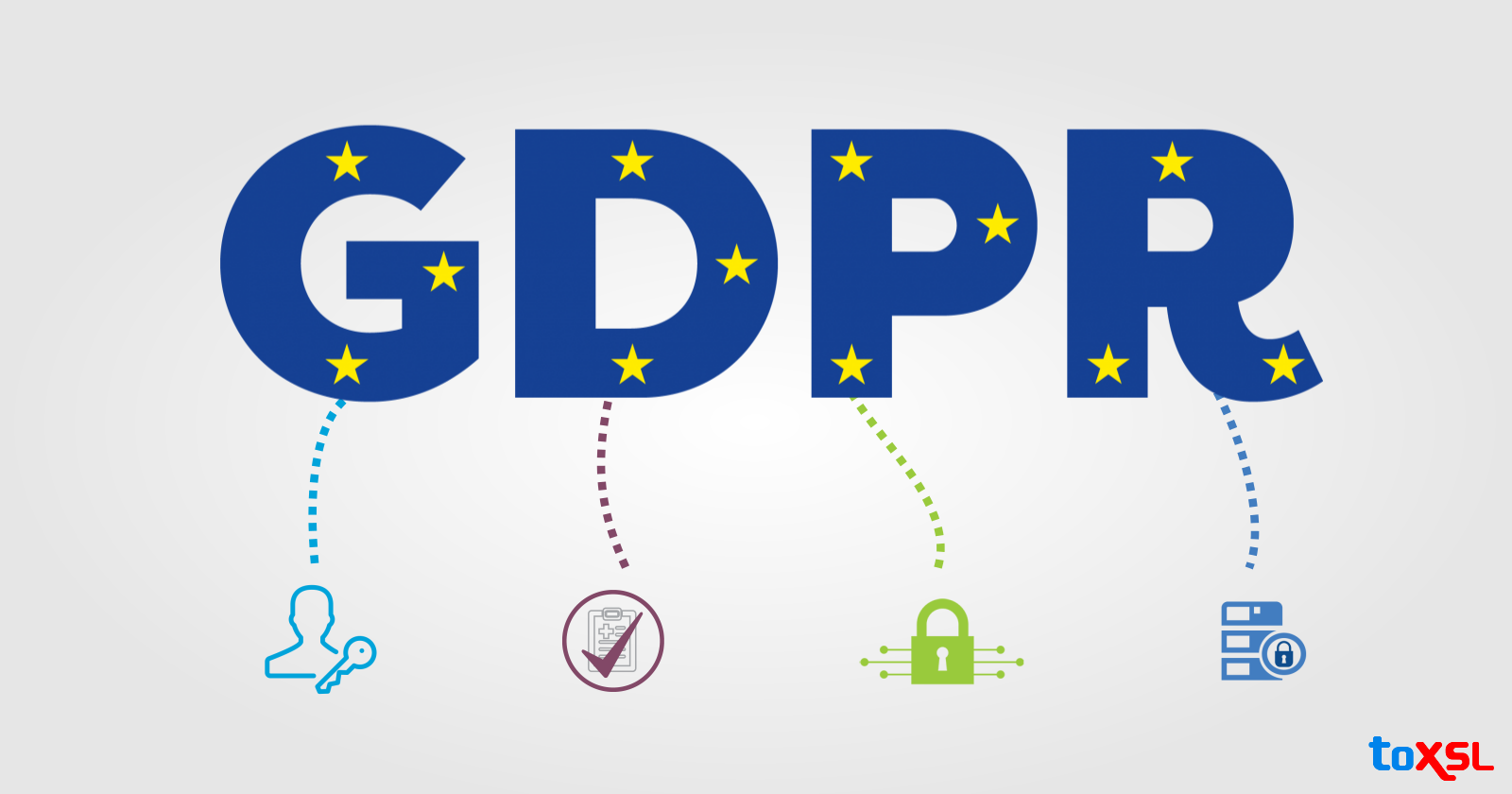- Mar 18, 2024
Share this post on:

In January 2012, The European Online Data Privacy law was passed for the data protection rights across the EU, replacing the existing cookie law and the 95/46/EC Directive on Data Protection.
The concept got named as “GDPR” and implemented into real practice this May with the objective of safeguarding the private and sensitive data of the EU residents. GDPR (General Data Protection Regulation) is basically an updated form of EU privacy laws in order to give the full control to the user over his data. Moreover, whenever a person is required to show his personal details including his ID proofs, credentials or passwords, to an organization which will use it on the web, he can directly ask for what purpose will his credentials be used.
GDPR Major Principles & Rights
To make these data protection and privacy aspects, GDPR defined some of the brief outlines. So it becomes necessary to go through those aspects to better understand the concept. The most important and notable ones are discussed below briefly.
Data Portability Rights: Offering convenience to the users to transfer data easily amongst the various service providers or from one IT environment to another.
Right to Know: In case the organization’s data gets hacked, they need to inform the national supervisory authority immediately so that the users can be intimidated as soon as possible to take safety measures for the data protection.
Right to Rectification: The user can anytime request to modify or add the data in the earlier provided information.
Easier Access to Data: All the users will be offered a fair access to information to know where their personal data is being used and for what all purposes.
Right to Object: Whenever the user feels his data is used anywhere like in direct marketing, or in some research, he can directly object for the same.
Right to be Forgotten: Once the individual feels that his data should not be used for processing anymore, he can get the information deleted for no further processing, with no retaining processes in future.
Getting ready for GDPR compliant Web Development
As of 25th May 2018, GDPR will be put into practice and will soon be experienced by the real world. With GDPR into full implementation, you must stay on the safer side. Are you ready? Firstly, just make sure that you are well aware of the changes which will be made under web development sector and how to deal with it smartly. Afterall, GDPR compliant apps and websites have become necessary. Go through the following points to better understand the concept and make your websites fully compliant with GDPR.
Clear Consent Forms
Till date, whenever you fill up a form online, you had to look up for the checkboxes of terms and conditions properly underneath. They were actually hard to find. GDPR now has made the rule to make multiple consent boxes which are easily visible plus in an easy to understand format. So, prepare for that and don't think of violating it.
Transformed definition of personal data
Over the time, personal data meant the DOB of the person, birthplace, religion, trade union membership, health data, and criminal convictions data. But now, GDPR has renamed the personal data of a user which will include his biometric data, genetic data, location data, online identifiers, and pseudonymized data. All of these parameters will be further linked to the user’s IP addresses, MAC addresses, cookies, browser history, fingerprints, and mobile IMEI numbers. So, plan your terms and policies accordingly by keeping in mind all these parameters.
Coding & Design Standards
Good news for web developers is that GDPR has no existing issues or problems with your testing tools or any development. The team just needs to present the details of the technology used in their development process to the GDPR officials. That’s it. Other minor aspects which developers need to satisfy as per GDPR include- refrain from using insecure API and plug-ins.
The GDPR regulations are going to analyze an application on the ground if its data heavy. So, make an effort to ensure that only the relevant and important data is stored. Moreover, personal data should not be linked to other data set.
Working on Data Transparency
To offer reliability to the customers, GDPR enables its users to anytime download his information details collected by an organization so that he can verify things easily in future. So, its high time for your web developers! Your apps should now introduce the feature which will allow its users to provide the required data in an easy manner.
GDPR Impacts
Simply put, GDPR is going to have an adverse impact on every website, those parts of your business where you store your personal & sensitive data. A business dealing with websites i.e. the web development sector will be affected by GDPR including CRM, websites, invoice systems, or spreadsheets containing client details. Websites need to make immediate modifications in order to comply with GDPR. For an easy approach, just keep 3 things in mind- consent, transparency, and security.
Get a clear view of the purpose of data you are using, get the agreement, and safeguard that data via strong security sources. Remember, if you are dealing with any of the EU territories, make sure your website complies with GDPR, otherwise pay a heavy fine. Other problems about which people are afraid of while opting for GDPR are presented in the graph below.
.png)
People still have a lot of confusion, while some are welcoming and some are not happy with GDPR. This is just a brief representation of GDPR but it does have emerged for a better view of a protected society with fully secured solutions.
Stronger the privacy laws, safer our data will be!











